
By Marlon Dale Ferreira
Sigiriya, also known as Lion Rock, is one of Sri Lanka’s most treasured historical sites and a UNESCO World Heritage Site. This ancient rock fortress and palace is situated in the central Matale District near the town of Dambulla. Rising nearly 200 meters above the surrounding plains, Sigiriya is a remarkable blend of natural beauty and human ingenuity.
Historical Significance
- Ancient Capital: Sigiriya served as the capital of King Kashyapa (477 – 495 AD). The site was selected due to its strategic advantages and its imposing presence.
- Monastic Complex: Before and after its use as a royal palace, Sigiriya was a Buddhist monastery from around the 3rd century BC.
Architectural Marvel
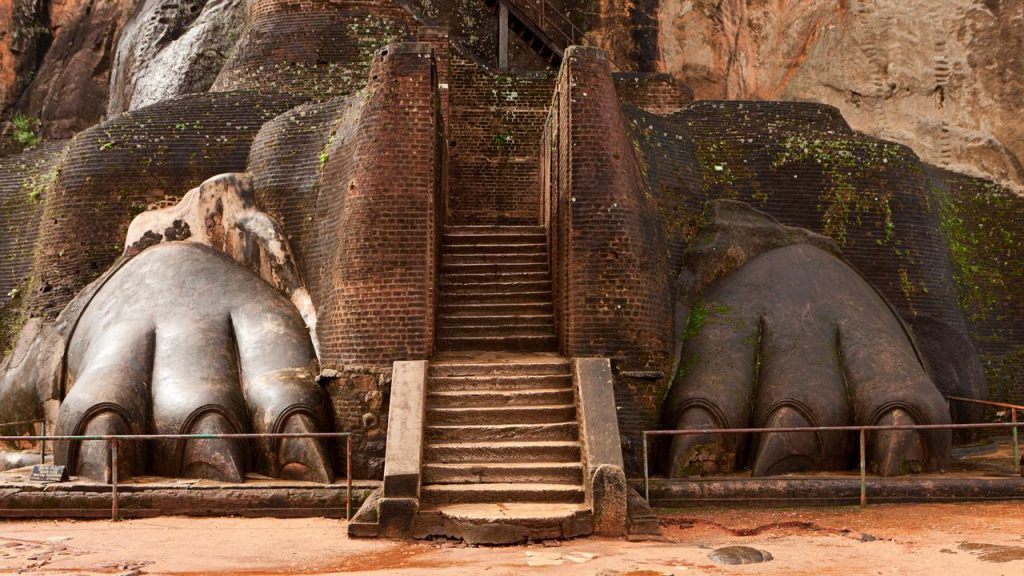
- Lion’s Gate: The entrance to the rock summit is marked by a colossal pair of lion paws carved into the rock. The name Sigiriya is derived from this feature (Sinha-giri, meaning Lion Rock).
- Palace Complex: At the summit, the remains of King Kashyapa’s palace can be found, including his throne and other structures. The palace was once a sophisticated complex with gardens, cisterns, and other facilities.
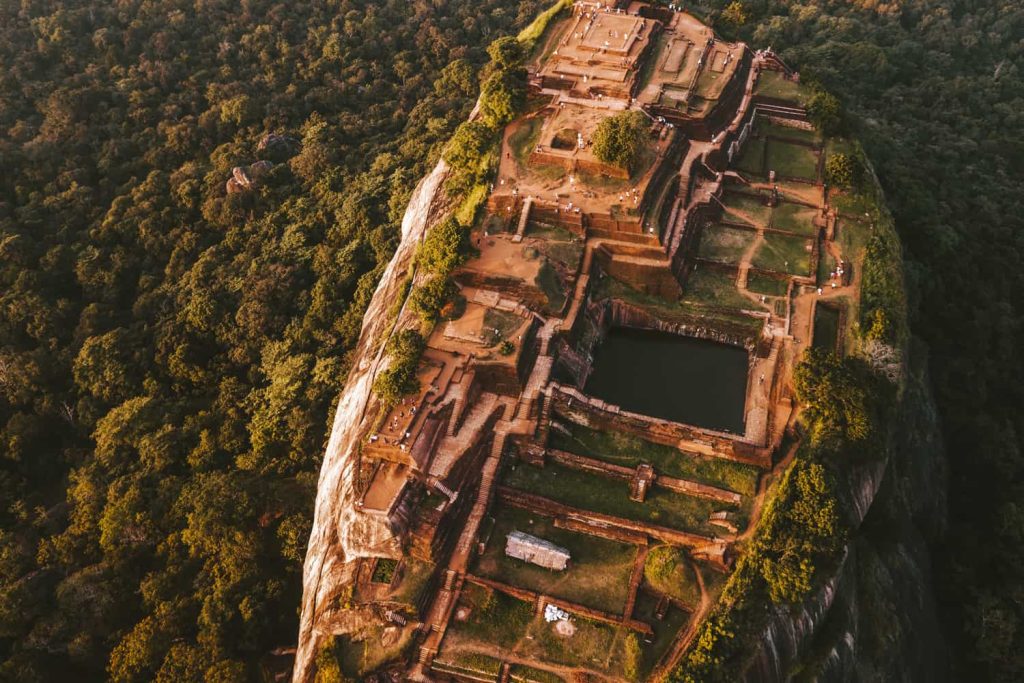
Frescoes and Mirror Wall
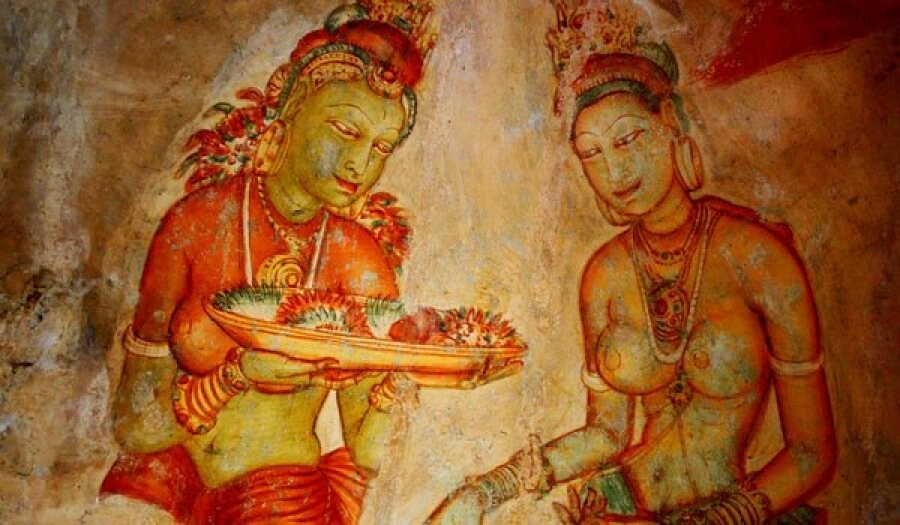
- Frescoes: The western face of Sigiriya is adorned with beautiful frescoes depicting celestial maidens known as Apsaras. These paintings are considered some of the best-preserved examples of ancient Sri Lankan art.
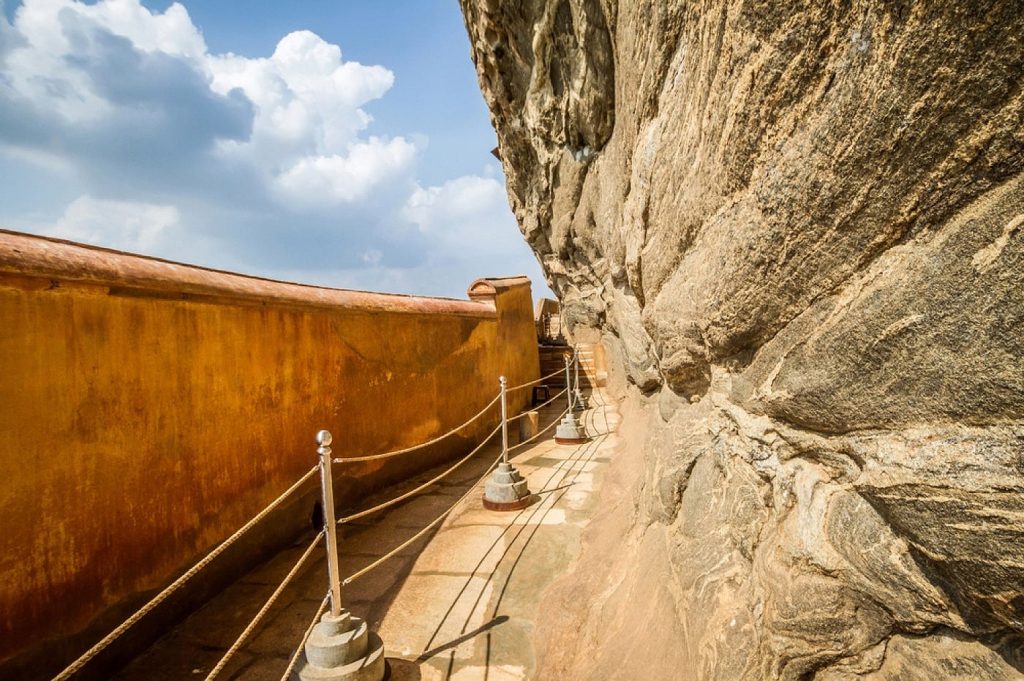
- Mirror Wall: Below the frescoes is the Mirror Wall, a highly polished wall that was once so shiny that the king could see his reflection in it. The wall is inscribed with ancient graffiti, some of which date back to the 8th century.
Gardens and Water Features
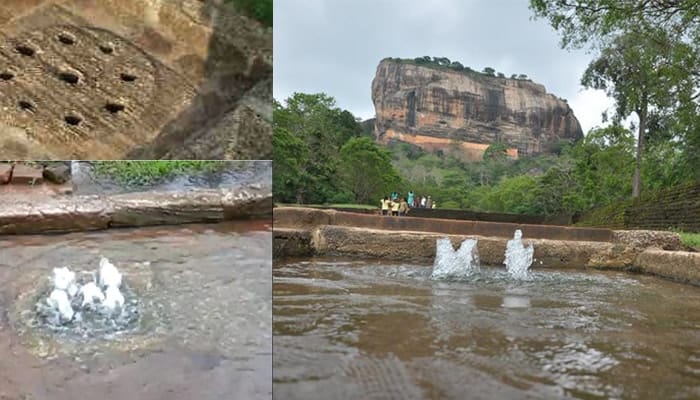
- Water Gardens: At the base of the rock, the water gardens are a marvel of ancient hydraulic engineering. They include sophisticated fountains, pools, and waterways that are still functional today.
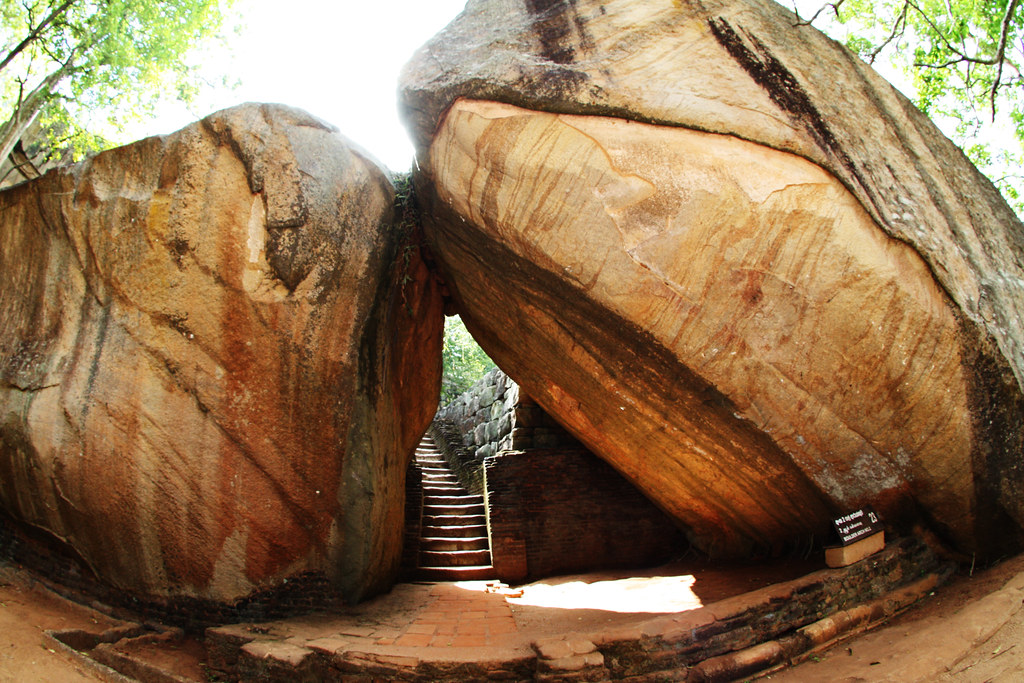
- Boulder Gardens: Leading up to the Lion’s Gate, the Boulder Gardens consist of winding pathways and massive boulders that were used for additional fortifications and dwellings.
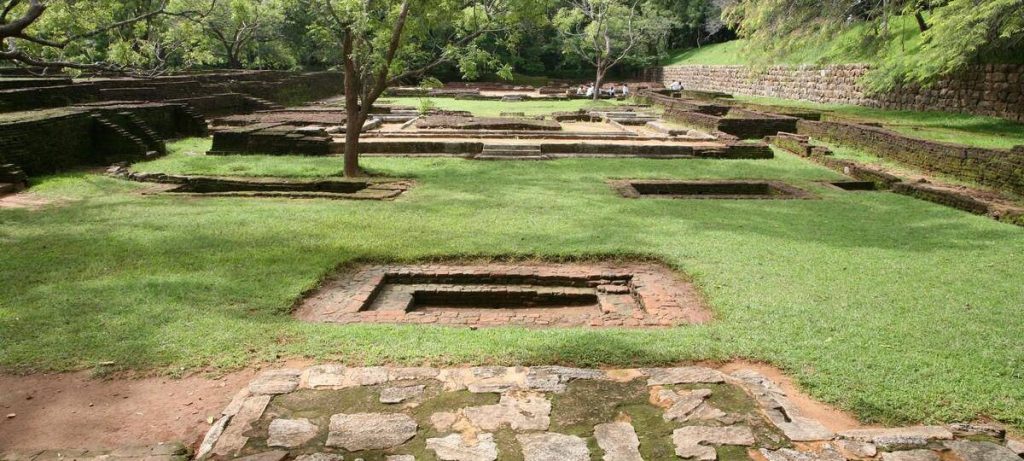
- Terraced Gardens: The terraced gardens are carved out of the natural hill at the base of the rock. They are a series of terraces rising gradually from the water gardens to the base of the rock.
Visitor Experience
- Climbing Sigiriya: The climb to the summit of Sigiriya involves navigating through a series of staircases, pathways, and the Lion’s Gate. The ascent, while challenging, offers breathtaking views of the surrounding countryside.
- Cultural Insights: Visiting Sigiriya provides deep insights into the ingenuity and aesthetic sensibilities of ancient Sri Lankan civilization. The combination of natural beauty, art, and architecture creates a profound cultural experience.
Conclusion
Sigiriya Rock Palace stands as a testament to Sri Lanka’s rich cultural heritage and architectural prowess. Whether you are an enthusiast of history, art, or natural beauty, Sigiriya offers a unique and unforgettable experience.




